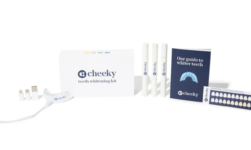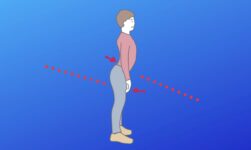
Any type of surgery necessitates the use of a number of different components i.e. foreceps and other surgical instruments. Doctors are usually responsible for tending to and closing wounds, especially after invasive surgery. The wound normally heals in a few days, and the doctor closes it in such a way that it doesn’t bleed or become infected.
Surgical sutures, a large category of surgical equipment and methods, were used to achieve this victory. The various types of surgical sutures are described in this article.
Your doctor will use sutures to heal wounds or lacerations. Suture materials come in a variety of shapes and sizes. There are also a variety of suture techniques to choose from. For your situation, your doctor will select the appropriate suture material and procedure. Before your treatment, discuss any concerns you have about sutures with your doctor.
Sutures can be divided into two categories: absorbable sutures that break down harmlessly in the body over time without intervention, and non-absorbable sutures that must be surgically removed if not left permanently. The type of suture used depends on the operation, the patient’s specific needs, and the surgeons’ discretion and professional experience.
Surgical sutures can be placed inside, but they must be re-opened if they are to be removed. Suture materials that are on the outside of the body can be removed in minutes without having to reopen the incision. As a result, absorbable sutures are frequently utilised inside and non-absorbable sutures are frequently used externally.
Certain sutures may be required to perform their function in a stressful environment, such as the heart (constant pressure and movement) or the bladder (adverse chemical presence); these sutures are usually either specially treated or made of special materials, and are often non-absorbable to reduce the risk of degradation.
Sutures are divided into several categories.
There are a few different sorts of sutures that you can come across if you require one. Here are several examples:
Gut suture: This type of suture is a natural monofilament suture that is commonly used in gynaecological surgery to heal interior soft tissue lesions.
PDS (polydioxanone monofilament suture) is a synthetic monofilament suture that can be used for soft tissue procedures such as abdominal closures.
Poliglecaprone:Polyglecaprone is a synthetic monofilament suture that can be utilised in any soft tissue repair. This material, on the other hand, should be avoided during cardiovascular treatments. It’s most typically utilised to seal skin in a nearly imperceptible way.
Polyglactin: This synthetic braided suture is useful for mending lacerations on the hands and faces.
Your doctor can determine the optimal suture type and material for you based on your needs.
An injury creates trauma to the affected area, which often necessitates the insertion of a suture. Book online and visit the doctors at Physicians Medical Urgent Care for convenient and rapid care when you need it most to avoid a more serious sickness.
What Is A Surgical Suture And How Does It Work?
One of the most frequent medical devices used by surgeons during surgeries is a surgical suture. After surgery or an injury, the suture aids in binding body tissues together. The use of a needle and a connecting thread is all that is required to apply a suture. Doctors now have access to a large range of surgical sutures in a variety of sizes, shapes, and thread materials.
The word suture is frequently confused with the word stitch. A suture, on the other hand, is the name of the medical device used by the doctor to repair the wound, whereas stitching is the technique employed by the doctor to shut it.
The shape of the tips on suture needles is used to classify them.
- Taper needles have a circular body that tapers to a tip smoothly.
- Cutting needles are triangular in shape and have a sharp cutting edge on the inside curve.
- Reverse cutting needles have a cutting edge on the outside curve.
The end of a taper-cut needle is a short, triangular cutting tip. Some needles are permanently attached to the suture, whereas others, known as “pop offs,” are separated from the suture by a forceful pull. With such a diverse selection of needle kinds, the physician should be well-versed in supplies and thoroughly inspect the outside of the package before opening it.
What Are Surgical Needle Extenders And How Does It Work?
Reusable needle extenders can extend conventional needles to a variety of diameters, allowing you to reach any injection site. Surgical Needle Extenders are available in 3, 4, and 6-inch lengths. Surgical needle extenders are used in a variety of obstetrical and gynecological procedures, including hysteroscopy, to deliver anesthesia to the area around the cervix.
The suture material is a foreign substance that has been transplanted into human tissues, causing a foreign-body tissue reaction. To reduce the risk of wound infection, a sterile field and a thorough aseptic technique are required during wound closure. Other wound healing issues, such as hypertrophic scars, broad scars, and wound dehiscence, might be caused by patient characteristics (such as nutritional condition), poor suture selection, or a technique that creates too much tension across the wound.
The initial tissue injury generated by needle penetration and subsequent suture passage has an impact on wound closure and healing. Important elements that the surgeon must consider include needle selection, suture surface qualities (e.g., coefficient of friction), and suture-coating materials for wound closure.
Final words:
The word suture is frequently confused with the word stitch. A suture, on the other hand, is the name of the medical device used by the doctor to repair the wound, whereas stitching is the technique employed by the doctor to shut it. Surgipro, Inc. only sells German surgical instruments of the greatest quality, all of which come with a lifetime warranty. By offering our surgical tools online, we can operate on tighter margins and avoid the exorbitant cost of a printed catalog. We are able to pass these savings on to our consumers because we are a family-owned business.





